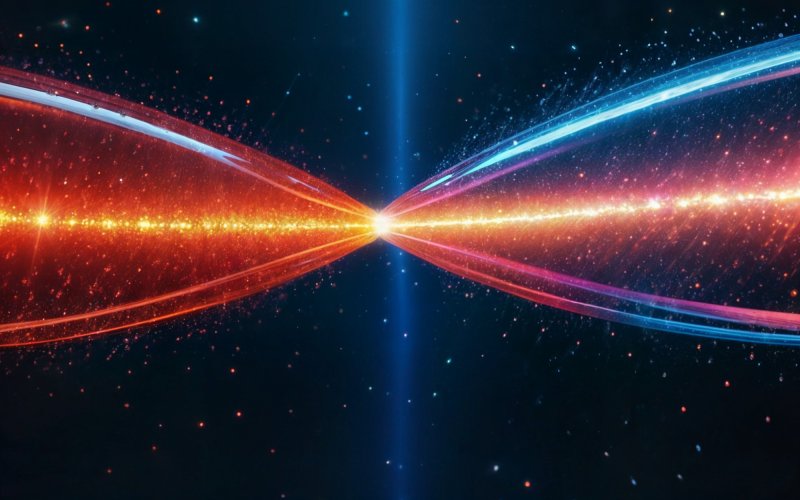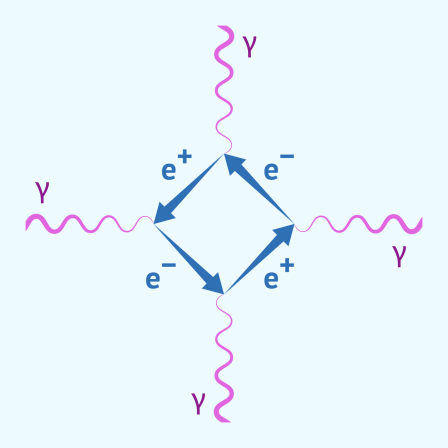The short answer is yes, they can, but it is extremely unlikely.
Photons are quanta of electromagnetic waves. When you turn on a light bulb, it starts producing billions and billions of these particles that whizz through your living room at the speed of light. They're pure energy. They have no rest mass. Photons are a type of quantum particle called bosons. These particles are not subject to the Pauli Exclusion Principle. This means that multiple photons can be in the same quantum state and not interfere with each other. If they collide, they'll pass through each other like ghosts.
The photon arriving from the left (red wavy line) decays into an electron and an anti-electron (blue arrows). At the same time, the photon arriving from the right also decays into an electron and a positron. The electron-positron pairs from both decays interact to form a photon. The "reflected" photons fly upwards and downwards.
If you point two beams of light at each other, they will intersect and continue uninterrupted. Photons can interact with particles with an electric charge, but photons themselves have no electric charge, so they can't interact. When two photons meet, they don't directly bounce off each other.
Yet in certain rare circumstances, a phenomenon can occur that looks like one photon bouncing off another. According to Einstein's famous equation, energy is actually matter, and matter can change back into energy. If a photon is a piece of energy, it can change into matter. A photon of sufficient energy can spontaneously decay into a particle and an antiparticle.
In a process called pair production, the entire energy of a photon is completely converted into, for example, the mass of an electron and a positron. If another photon were to fly against this photon and at the same moment it too decayed into a positron-electron pair, the particles produced in this way could react with each other. The electron from one photon would interact with the positron from the other photon. The remaining two particles would also react in a process called annihilation, in which their mass is completely converted into energy in the form of a photon. As a result, the two photons would then fly out of the collision site. It would look like light bouncing off each other.
We have only documented parts of the whole process so far. We have already observed the decay of a photon into a particle-antiparticle pair, and we have also captured the process of annihilation, where the particle and antiparticle react together to form a photon. However, the complete light-light scattering process is so rare that it has not yet been captured.
For pair production to occur, the photon must have sufficient energy to match the mass of both particles. Only beams with energies corresponding to gamma radiation can do this. Consequently, the positron-electron pair production must occur at the same time for photons flying towards each other. This is extremely unlikely, and therefore light-light scattering is also extremely unlikely.
On the other hand, the universe is large, has been around for a long time, and photons are unimaginably abundant. So from time to time, it is bound to happen somewhere that two photons decay at the same time and then bounce off each other. We just haven't stood by this process yet with the appropriate detector.
Want to ask something?
Send us an e-mail with the subject “Physics mysteries” to the address:
We can't wait to tackle your interesting questions!






